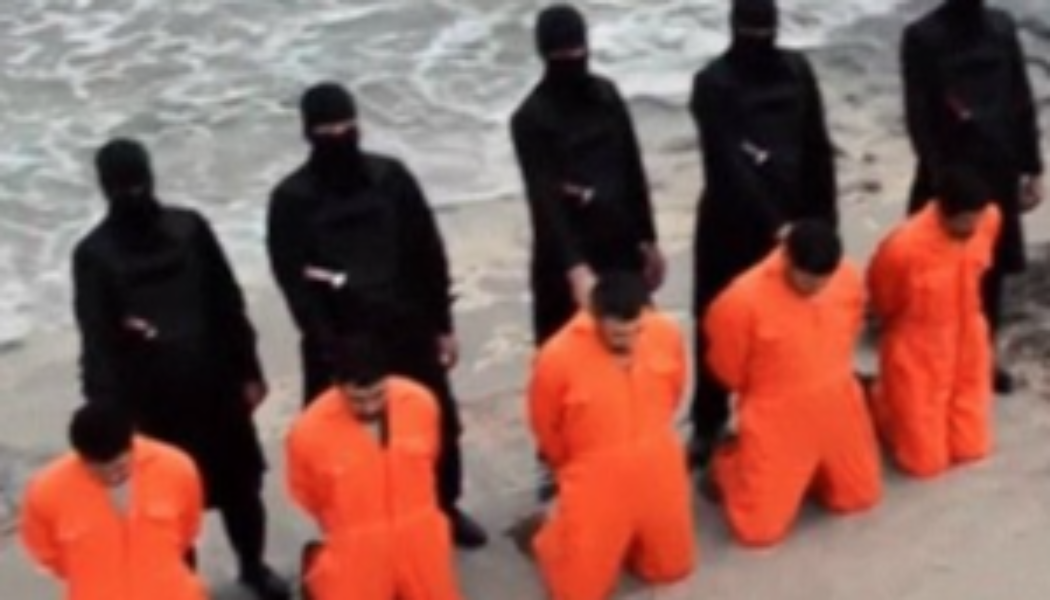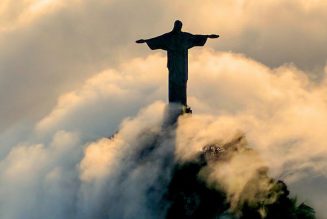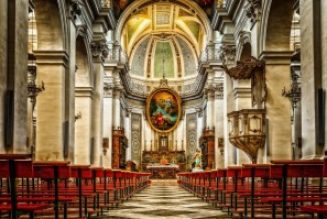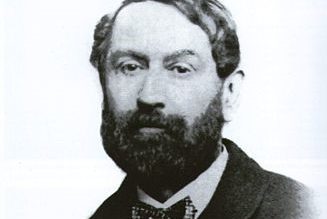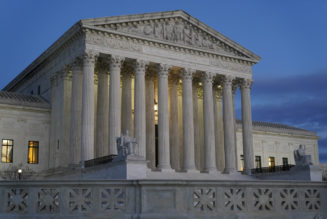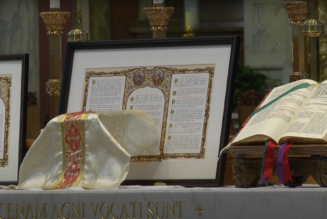
> Italiano
> English
> Español
> Français
> All the articles of Settimo Cielo in English
*
Twenty-one Christians were beheaded as “people of the cross” by Muslims of the Islamic State just over seven years ago, in the middle of February 2015, on the Libyan beach of Wilayat Tarabulus, a bit west of Sirte. They were twenty Copts from Egypt, plus a companion from Ghana.
A few weeks after the massacre, the Coptic “pope” Tawadros II canonized them as martyrs. But little or nothing was known about these twenty-one until a renowned German writer, Martin Mosebach, ventured into their villages to reconstruct their story and commit it to a book, as compelling as a novel, just now seeing the light of day in its Italian translation, published by Cantagalli, entitled: “I 21. Viaggio nella terra dei martiri copti.”
The martyrdom of the twenty-one was immortalized in a video produced and released by none other than their killers, in an overt challenge to Rome as symbol of the Christian West. But for the families and the people of those killed, that video was turned into a source of joy and faith. Before they were beheaded, the twenty-one had nothing on their lips but murmurs of “Jarap Jesoa!”, invocations to the Lord Jesus, as in the acts of the martyrs of the first centuries, in a Church of Egypt that has always counted its years starting from the persecutions of Diocletian and is still called “the Church of martyrs,” almost continuously oppressed by Byzantines, Persians, Arabs, Fatimids, Mamluks, Ottomans, down to today’s military regimes, to the Muslim Brotherhood and their fanatical imitators.
The twenty-one are almost all from Upper Egypt, from farming villages around the city of Samalut and beneath the fortress of Gebel El-Teir, on the eastern bank of the Nile, with the ancient shrine commemorating a stage of the flight into Egypt of Jesus, Mary, and Joseph. In El-Or, the Al-Sisi regime financed the construction of a large church in honor of the martyrs, with their relics. But the life of the Copts in Egypt, despite the fact that they are much more numerous than official statistics say, is still under severe threat. Martin Mosebach, in the course of his investigation, was amazed by the fortifications erected to defend the episcopal sees with their cathedrals, schools, and offices.
But despite all the hostilities, Mosebach also noted an astonishing resurgence of vitality in the Coptic Church, with its monasteries in the desert, each with hundreds of monks, many of them young.
The “normal” holiness of the twenty-one martyrs – as described in the pages of the book reproduced below – is a testimony of this living and widespread faith.
With their indomitable faith, in the forty-one days of captivity before their execution the twenty-one not only did not embrace Islam but converted to the Christian faith one of their captors, who before fleeing to safety phoned the relatives of one of the captives and told of his conversion.
At the end of his investigation, Mosebach wonders if Coptic Christians, strengthened by uninterrupted centuries of martyrdom, may not also kindle hope for the worn-out Churches of the West, which have arrived today, after their past splendors, “precisely where the Coptic Church has persevered with patience,” until they bloom again in the midst of their many adversities.
*
AN “ABSOLUTELY NORMAL” HOLINESS
(From the chapter: “Among the families of the martyrs”)
Sixteen of the twenty-one martyrs had lived in an alley in El-Or, side by side. In the houses hung an image of the slain son, with a crown and white diaconal robe. No home was shrouded in sadness, condolence and commiseration were out of place. […]
The official martyrology of the archdiocese, due to a lack of biographical material, was rather terse in describing the personalities of the individual martyrs. […] But after my visit to El-Or and the neighboring villages, I realized that the episcopal chronicler had simply written down what had been reported to him. I myself heard nothing more than he did.
Tawadros, who at 46 was the oldest of the martyrs, has left behind a widow who must now raise their three children on her own. She had this to say about her husband: “He was honest and simple.” Would the Virgin Mary have said anything else about Saint Joseph? The parish priest who was with me added: “These were normal young people, absolutely normal. I never thought that one day they could become saints!” But if these were normal young people, theirs was in any case a rather lofty normality. Tawadros’s widow had found out that in Libya he had been advised to change his Christian name, because this could attract anger. His response was: “He who starts out by changing his name ends up also changing his faith.”
At the age of 41 Magued was the second oldest of the twenty-one, a sturdy farmer with a low forehead and thick hair. As I was saying goodbye to his widow she told me with embarrassment, as if this confession took an effort: “He wanted us all to be angels.”
The young widow of the 28-year-old Samuel, the elder of two brothers, first showed me a posed family photo in which she was standing with her husband and their three children against a futuristic backdrop. Then she added that, from Libya, her husband wanted to make sure that the family was praying; on each call this was his last question.
Milad, 26, did not give up his fasts in spite of his strenuous farm work and against the advice of the parish priest, to whom he would reply: “Man does not live by bread alone.” This is what I heard from his widow, still practically a girl, dressed in mourning. From Libya they sent back to her the Bible he always carried with him in his bag. She is unable to read it, and keeps this treasure for her children.
23-year-old Girgis, the elder of two brothers, recently engaged to a cousin, often spent up to two hours praying in his room, and his father gestured toward the closed door with its colorful sacred images as if his son were still inside.
The young widow of the 28-year-old Luka – who never got the chance to see his daughter – recalled that he could read thoughts, including hers: “He was always sending me money, even before I could say I needed anything.” After visiting them, I learned that the young widows I had met would never remarry, would remain alone because they were married to a martyr.
The mother of Bishoy and his younger brother Samuel, a frail little woman, was holding an image of the latter in which he appeared with large eyes like those of an icon and a serene face. He always used to say: “I am the son of the King.” At the age of twelve a stone from up on the third floor hit him on the head. “While he was in intensive care the Holy Virgin appeared to him and said: ‘Do not be afraid,’ and right away he was healed.”
In the house of the 23-year-old Mina there is an object he built: a model of a Coptic church, the size of a bird cage, with small domed towers and arched windows, lit inside by brightly colored bulbs. While he was building it, his mother told me, Mina was spared from a serious injury: “The circular saw slipped and was already on his hand when, suddenly, it stopped moving.” […]
Only Kiryollos’s mother, who had had five other children, was unable to tell me anything about her son. A serene atmosphere prevailed in his home, a young uncle, who was a priest, said: “He simply lived day by day.” Was this what I myself thought I had caught on the martyr’s face in the video of the execution, the absent gaze, the slight elsewhereness, a dreaming with eyes open? Even after the beheading his face kept this expression. I remembered that passage from Revelation: “Then I saw the souls of those who were beheaded for the testimony of Jesus. They came to life and reigned with Christ for a thousand years” (20:4-6). […]
Malak’s father, a big good-natured farmer, reported that on the night after the killing he had witnessed this phenomenon: an intense white light had appeared in the dark sky, “as from a laser cannon.” He and the neighbors had seen it even before they got the news of the death of their sons. “We didn’t know how they were, but when we saw the light, then it was clear: either they had been set free or they were dead.”
And after the massacre, the miracles did not cease. […] This confirmed for the families, but also for the neighbors and a vast number of persons all over the country, the fact that the martyrs had really come to Christ. During the forty-one days of their captivity there was the torment of going without news and being resigned to the worst. However, when they saw the video released by the killers and were sure, then trust came back: “Today we have a holy martyr in Heaven: we must rejoice, and nothing can hurt us anymore.”
This was the reason why the video was received with absolute naturalness. In each family there was an iPad on which it could be seen in its full length, without piteous adjustments and with nothing cut out; surrounded by children with runny noses, in rooms adorned with photographs of the those who had received the crown, with a goat at the door and a calf in the next room.
In many conversations I never once heard a call for retaliation or revenge, or even for the punishment of the murderers. It was as if the murderers were of no interest, with the splendor of the martyrs obscuring them. What counted for their sons was this: they had “fought the good fight, finished the race, kept the faith” (2 Tm 4:7), as the apostle Paul writes.
————
Martin Mosebach’s investigation into the twenty-one martyrs of the Coptic Church has a preface by Cardinal Robert Sarah, on the authentic meaning of Christian martyrdom, quite different from that customary in the Muslim world.
The book is part of a series from Edizioni Cantagalli dedicated to the illustrious German philosopher Robert Spaemann (1927-2018) and edited by Leonardo Allodi, professor of the sociology of cultural processes at the University of Bologna. The scholarly committee of the series includes, among others, Cardinal Camillo Ruini, Rémi Brague, Sergio Belardinelli, Carlo Galli, Vittorio Possenti, Gabriella Cotta, and Mosebach himself.
.
Join Our Telegram Group : Salvation & Prosperity
